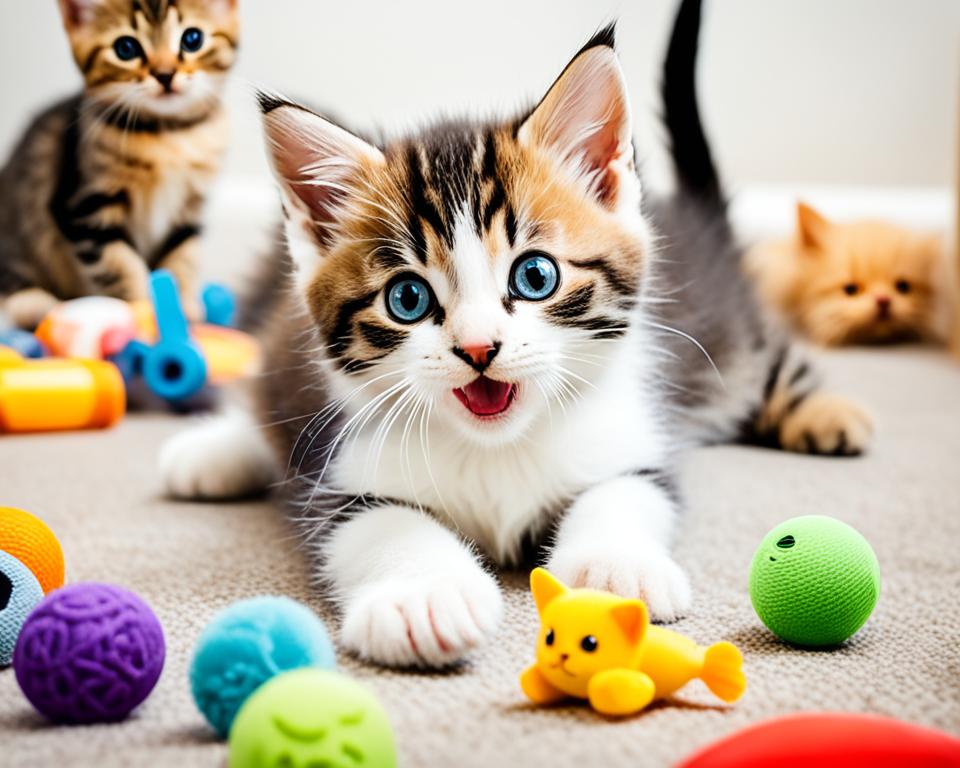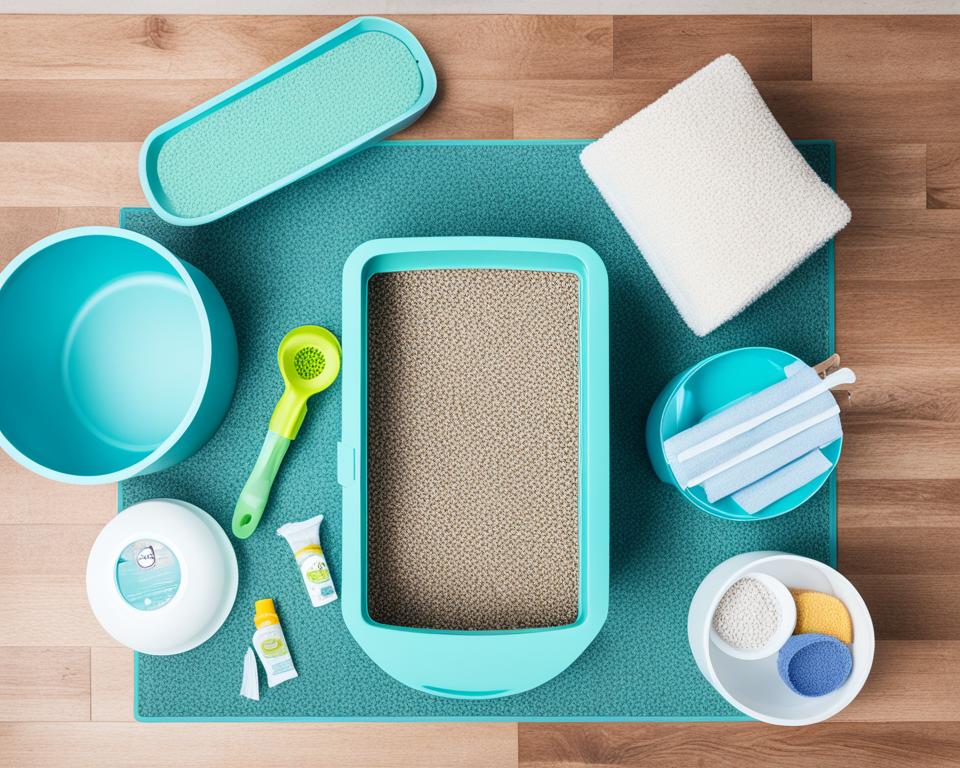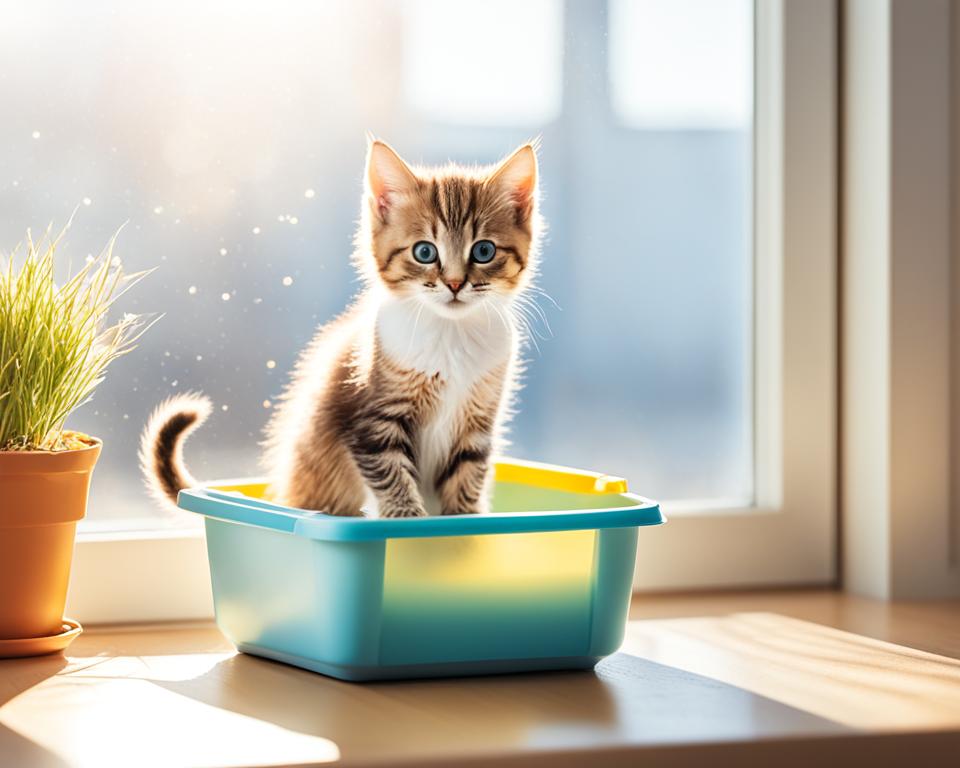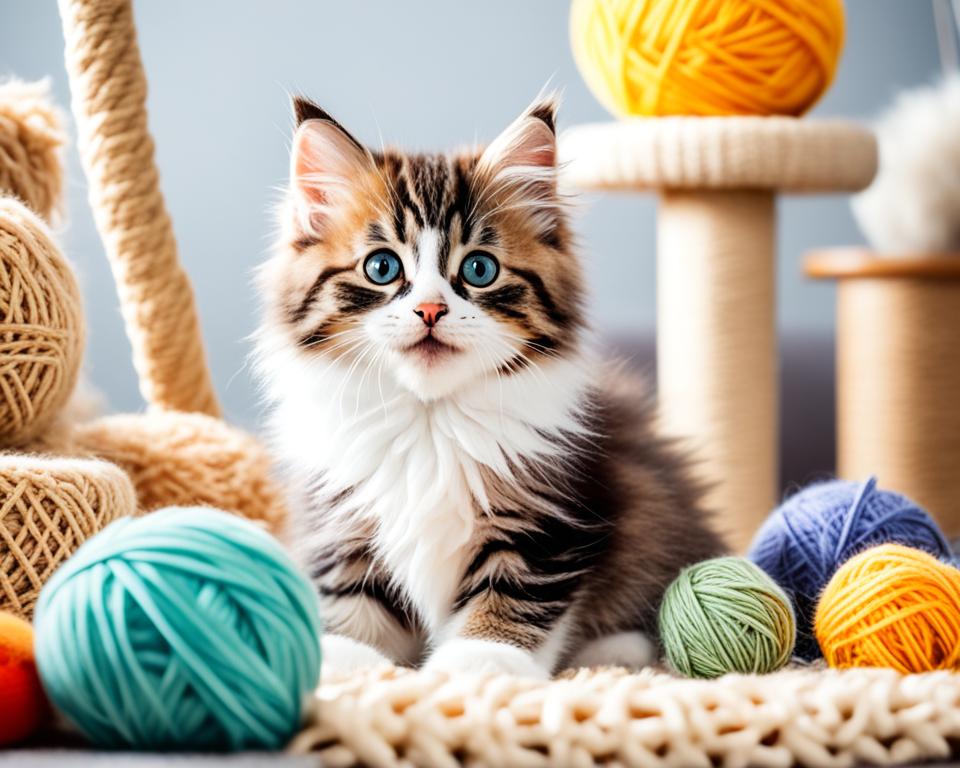I’m excited to share my knowledge on training kittens. Many believe cats can’t be trained, but it’s not true! Kittens are eager to learn with the right methods.
Positive reinforcement is great for kittens. Start training early with important skills like using the litter box and getting along with others. Keep training short, under 15 minutes, since kittens get bored easily. It’s important to be consistent with your training signals and cues.
Clicker training is a powerful tool I’ve seen work well. Kittens learn fast with this method. Add treats to make it even more effective. Training before meals works best when your kitten is hungry and ready to focus.
Being patient is key in training kittens. If your kitten gets distracted, stop and try again later. Focus on one skill at a time for the best outcomes. With these tips, you’ll be well on your way to having a well-behaved and happy kitten.
Understanding Your Kitten’s Needs

Raising a happy feline starts with knowing what your kitten needs. Kitten behavior modification and socialization are vital for a well-adjusted cat. Let’s explore what makes our furry friends special!
Kittens love to explore and learn about the world. They need a clean litter box, fun toys, and a comfy place to sleep. But there’s more. Socializing kittens early, starting at 8-9 weeks old, is key. It helps them grow into confident, friendly cats.
Creating a fun environment is key for kittens. Toys and scratching posts keep them busy and happy. Plus, it’s a great way to connect with your kitten.
“Socializing kittens early on with people and other animals can prevent anxiety issues later on.”
Here are some important tips on kitten behavior modification:
- Start litter training when they eat solid food
- Use treats and toys to make training positive
- Introduce kittens to new things to reduce future anxiety
- Start basic obedience training early
Every kitten is different. Some, like Ragdolls and Siamese, love being touched. Others might need more time to get used to it. With patience and the right techniques, you can help your kitten become happy and well-adjusted.
Essential Supplies for Successful Kitten Training

Having the right supplies is key to raising a happy, well-behaved kitten. Let’s look at the must-have items for litter box and scratch training.
Choosing the Right Litter Box
For litter box training, get a box with low sides for easy access. You should have at least two kitten-sized boxes in your home. Unscented clumping litter is best. Kittens may need to use the litter box often, so place them around your home.
Selecting Appropriate Toys and Scratching Posts
For scratch training, having variety is important. Provide different textures and surfaces. Offer soft toys, toy mice, and interactive wands for play. For scratching, get posts with both vertical and horizontal surfaces.
| Toy Type | Purpose | Benefits |
|---|---|---|
| Interactive Wands | Playtime | Bonding, Exercise |
| Scratching Posts | Scratch Training | Nail Health, Furniture Protection |
| Soft Toys | Solo Play | Mental Stimulation, Comfort |
Importance of a Comfortable Sleeping Area
A cozy bed in a common area encourages socialization. Kittens who sleep near family tend to be more sociable. Don’t isolate your kitten in a separate room, as this might make them antisocial.
Remember, the right supplies help your kitten adjust well. With these essentials, you’re setting up for successful litter box and scratch training for your new kitten.
Litter Box Training: Setting Your Kitten Up for Success

Litter box training kittens is key to a happy life with your cat. Most kittens learn it easily because they like to bury their waste. Let’s look at some good ways to train your kitten to use the litter box well.
Optimal Litter Box Placement
Choosing the right spot for your kitten’s litter box is important. Put it in a quiet, warm place where not many people walk by. This lets your kitten have privacy. For houses with more than one floor, have a litter box on each floor. You should have one litter box for every cat you have, plus one extra.
Introducing Your Kitten to the Litter Box
Start training when your kitten is about 4 weeks old. Pick a box that’s big enough for your kitten, like 1.5 times their length. Kittens need a tray that’s 13 by 9 inches. Use a fine-grain litter because cats like it. Show your kitten the box and put them in it after meals and naps. Praise them when they use it right.
Maintaining a Clean Litter Box Environment
Keeping the litter box clean is key for training success. Clean it at least once or twice a day. Do a deep clean every week with an enzyme cleaner to get rid of smells. If your kitten won’t use the box, try different litter or a new spot. If they keep avoiding it, they might be sick, so see your vet.
| Litter Box Training Milestones | Age | Notes |
|---|---|---|
| Start Training | 4 weeks | Begin when kitten starts eating solid food |
| Consistent Use | 8-12 weeks | Most kittens reliably use litter box by this age |
| Full Training | Up to 16 weeks | Some kittens may take longer to master litter box use |
Socialization: Raising a Friendly and Confident Kitten
Kitten socialization is key to making a happy cat. Start between 2 to 7 weeks old, when they’re most open to new things. I make sure my kitten meets at least 100 people during this time, as experts suggest.
Using positive reinforcement is important. I introduce my kitten to different people, places, and animals. Short 15-minute meetings are best, especially with new people. I give treats and praise to make these moments positive.
When meeting other pets, I’m careful. With dogs, I keep them on a leash and let the kitten set the pace. For other cats, I use scents to help them get used to each other before they meet face-to-face. I also introduce grooming tools and toys early, touching all parts of my kitten’s body daily to build trust.
Socializing a kitten is a long-term effort. The key period is up to 8 weeks, but I keep it up to 14 weeks. By exposing my kitten to many things and rewarding them, I help them become friendly and confident cats.

